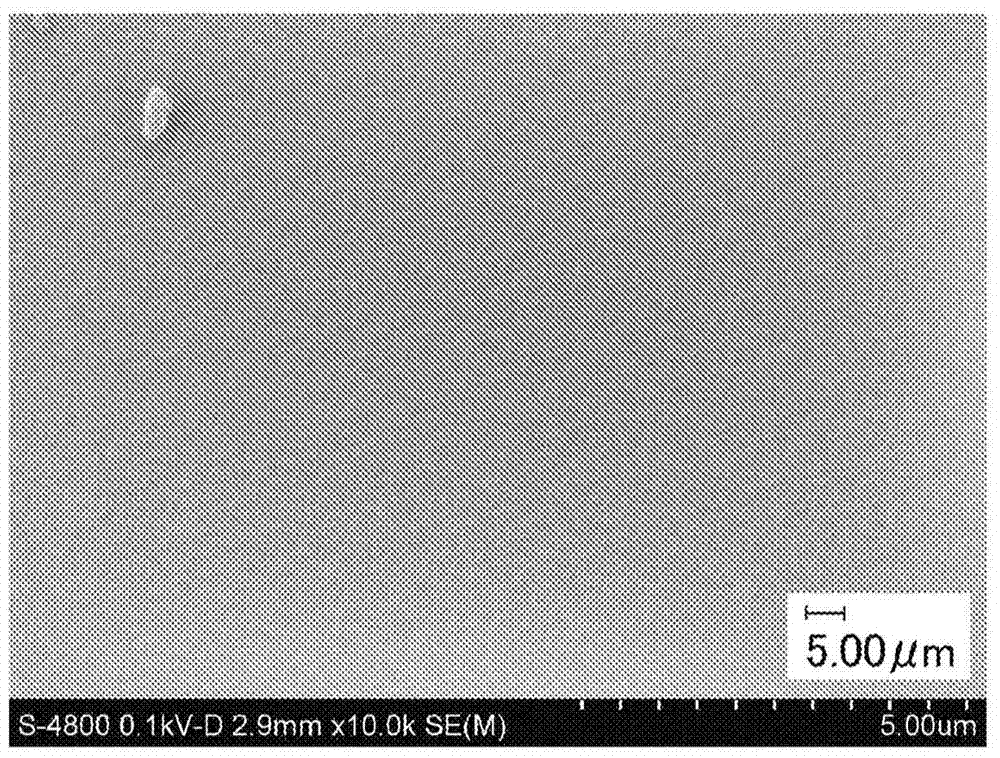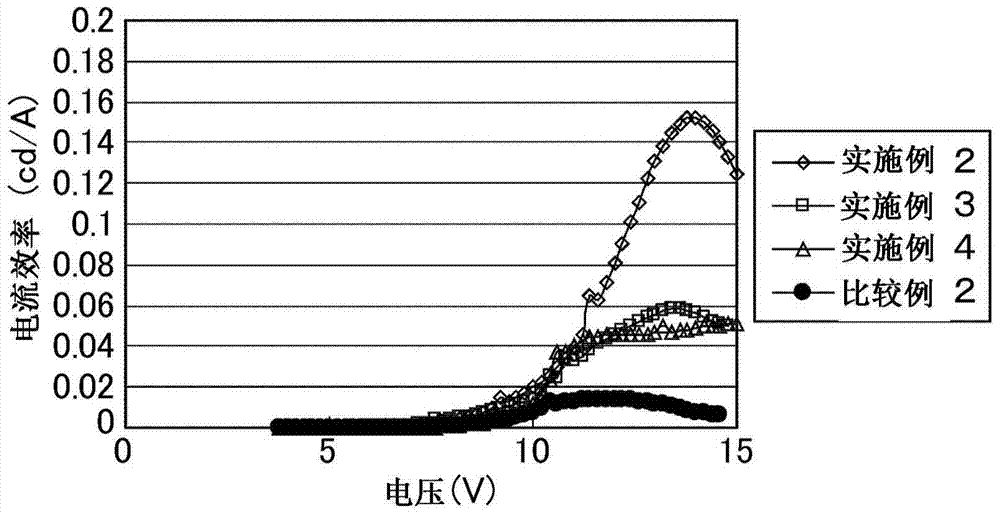Organic electroluminescence element and its manufacturing method
An electroluminescence element and luminescence technology, which is applied in the direction of electroluminescence light sources, electrical components, organic semiconductor devices, etc., can solve problems such as degradation and cumbersome manufacturing process of light-emitting elements
- Summary
- Abstract
- Description
- Claims
- Application Information
AI Technical Summary
Problems solved by technology
Method used
Image
Examples
Synthetic example 1
[0651] (Synthesis of 2,7-bis(3-dibenzoborol-4-pyridylphenyl)-9,9'-spirobifluorene)
[0652] Add 2-(dibenzoborolylphenyl)-5-bromopyridine (2.6g, 6.5mmol), 2,7-bis(4,4,5, 5-Tetramethyl-1,3,2-dioxaborolanyl)-9,9'-spirobifluorene (1.5g, 2.7mmol), Pd(PtBu 3 ) 2 (170 mg, 0.32 mmol), and THF (65 mL) was added to the flask under a nitrogen atmosphere, followed by stirring.
[0653] A 2M tripotassium phosphate aqueous solution (11 mL, 22 mmol) was added thereto, and heated and stirred at 70° C. under reflux. After 12 hours, it was cooled to room temperature, the reaction solution was transferred to a separatory funnel, water was added, and ethyl acetate was used for extraction. The organic layer was washed with 3N hydrochloric acid, water, and saturated brine, and then dried with magnesium sulfate. The filtrate after filtration was concentrated, and the obtained solid was washed with methanol, thereby obtaining 2,7-bis(3-dibenzoborole-4-pyridylphenyl) in a yield of 47%. )-9,9'-spi...
Synthetic example 2
[0663] Under an argon atmosphere, ethyldiisopropylamine (39 mg, 0.30 mmol) was added to a dichloromethane solution (0.3 ml) containing 5-bromo-2-(4-bromophenyl) pyridine (94 mg, 0.30 mmol) , added boron tribromide (1.0M, 0.9ml, 0.9mmol) at 0°C, and stirred at room temperature for 9 hours. After cooling the reaction solution to 0° C., saturated potassium carbonate aqueous solution was added, and extraction was performed with chloroform. The organic layer was washed with brine, dried over magnesium sulfate and filtered. After concentrating the filtrate with a rotary evaporator, the resulting white solid was filtered out and washed with hexane to obtain a boron-containing compound 2 (40 mg, 0.082 mmol) represented by the following formula (50) in a yield of 28%. .
[0664] [chem 48]
[0665]
[0666] Its physical property values are as follows.
[0667] 1 H-NMR (CDCl 3 ):7.57-7.59(m,2H),7.80(dd,J=8.4,0.6Hz,1H),7.99(s,1H),8.27(dd,J=8.4,2.1Hz,1H),9.01(d, J=1.5Hz,1H);
Synthetic example 3
[0669] Under a nitrogen atmosphere, the diethyl ether solution (1M, 61.2ml, 70.4mmol) of pentafluorophenylmagnesium bromide was cooled to 0°C, and a diethyl ether solution of zinc chloride (1M, 17ml, 17mmol). After completion of the dropwise addition, the mixture was stirred at room temperature for 1 hour. A toluene solution (80 ml) containing 5-bromo-2-(4-bromo-2-dibromoborylphenyl)pyridine (3.8 g, 8 mmol) represented by the above formula (26) was added thereto, at 80 ℃ heating and stirring for 15 hours. After cooling to room temperature, the reaction solution was added to ice water, and extracted with chloroform. The organic layer was washed with saturated brine, dried over sodium sulfate, and filtered. After concentrating the filtrate with a rotary evaporator, it was purified by silica gel chromatography (hexane:dichloromethane=1:1), thereby obtaining a boron-containing compound represented by the following formula (51) in a yield of 58%. 3 (2.2 g, 4.61 mmol).
[0670]...
PUM
| Property | Measurement | Unit |
|---|---|---|
| thickness | aaaaa | aaaaa |
| thickness | aaaaa | aaaaa |
| thickness | aaaaa | aaaaa |
Abstract
Description
Claims
Application Information
 Login to View More
Login to View More - R&D
- Intellectual Property
- Life Sciences
- Materials
- Tech Scout
- Unparalleled Data Quality
- Higher Quality Content
- 60% Fewer Hallucinations
Browse by: Latest US Patents, China's latest patents, Technical Efficacy Thesaurus, Application Domain, Technology Topic, Popular Technical Reports.
© 2025 PatSnap. All rights reserved.Legal|Privacy policy|Modern Slavery Act Transparency Statement|Sitemap|About US| Contact US: help@patsnap.com



